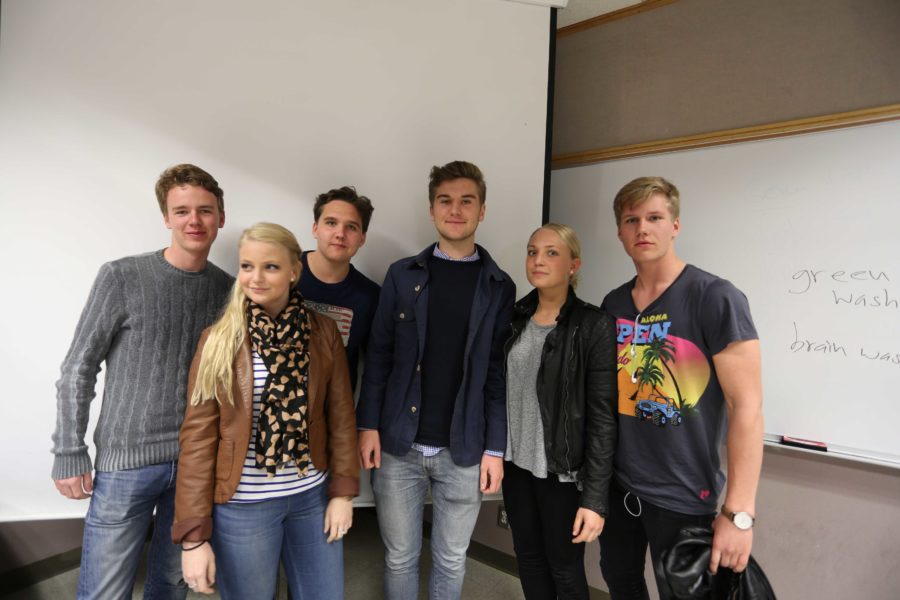Young adults become more disenchanted with our country’s culture and leadership each day. Yet, we often forget that we live in a fantastic country and take for granted the numerous options before us.
Sometimes we need a new perspective to value what we have. Santa Rosa Junior College’s International Student Program offers such alternate views, exchanging cultural ideas to connect the world in a global economy.
Tapping this resource we learn from each other, delve into new cultures and learn that people are very much alike, no matter where they’re from. One added bonus to bringing international students to our campus is that SRJC keeps all their tuition. Normally sending tuition from local students through the state government, the school gets back the student’s allotted funds. With more money our school can spend on us.
With our total student body reaching upwards of 30,000 and only about 80 international students, there is plenty of room for growth, exactly what SRJC President Dr. Frank Chong sees in the program’s future.
“Right now we rely on word of mouth to recruit international students,” said Chong. “They either have a friend or a relative that lives in the area and that draws them here. Still, we’re trying to bring more to the program.” He went on to explain that Chinese schools wish to exchange students and teachers, to help their English by bringing English speakers and possibly English teachers to the Chinese schools. “Together we benefit from cultures colliding, and we learn how to learn their way. There are many educational methods and sometimes to realize that is as valuable as the course material,” Chong said.
Japanese international student Hiroki Inoue found out about SRJC through a friend and loves his stay in our country.
“Santa Rosa is beautiful. I found it very different from what I expected. I expected Americans to be wild, which they are, but only when they want to party,” said Inoue. “When students here have to study its all business. They form study groups and do nothing but study, they’ve found a wonderful balance. The teachers were the biggest difference. In Japan everything is very polite and formal. Here the teachers can be your friend, you can develop a bond and see how they truly want you to succeed,”
Inoue has found many things about America he loves but he still holds his homeland in the highest regard. “I definitely miss Japan. I miss the food – American food all tastes similar. I miss my family and friends and sometimes it’s difficult to speak English.”
Inoue will take his SRJC education and transfer to a university in Japan because our universities are far too expensive for international students, but he will take the lasting memories and lessons learned in a foreign country with him when he goes.
Along with other international students, the SRJC hosts a group of Swedish students. For the last 11 years, groups from the Swedish equivalent of a junior college came to our Santa Rosa campus, living with a host family and taking classes.
“They get the opportunity to see how Americans do it,” said Kim Hunt, SRJC international student advisor. “They come from the same school every year. An old faculty member who had ties to the school in Sweden created the program and it’s been happening ever since.”
The Swedish students take on a new home with a host family for 5 weeks and take two classes at our campus. One, a human relations course taught by Rick Cheek, is strictly for the Swedish students. For the second class they get into small groups for a political science class with local students.
They only receive a single credit for their time here, but the life lessons and cultural awareness that comes with living with an American family and trying our way of life far outweighs the education they receive.
Swedish student Viktor Lennartson gave his perspective after just a week in America. “It’s a lot like I thought it would be,” Lennartson said. “Americans and Swedes are very much alike. Our schools are very similar in how they conduct themselves; ours is just much smaller.”
Some cultural differences shocked him. “The size of everything was very surprising,” Lennartson said, “from meal portions to the size of a can of Coke and everything at your Costco – everything is bigger in America.”
Another Swedish student, Peter Ekelund, said he was surprised by our faculty’s enthusiasm. It was a main factor into how he felt he was able to settle in so quickly.
“The people here are great,” Ekelund said. “They took very little getting used to. The things I have trouble grasping are all the poor and obese people. Your country’s dependence on cars is also something I’m definitely not used to.”


